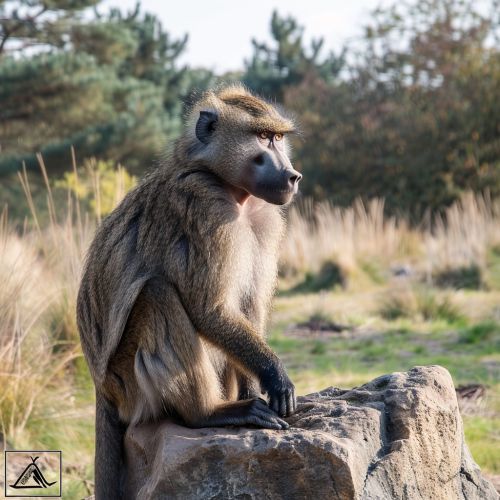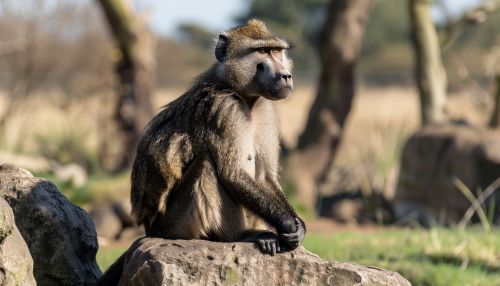Kinda baboon
Taxonomy and Evolution
The Kinda baboon (Papio kindae) is a species of baboon from the Old World monkey family. It was first described by the British zoologist Oldfield Thomas in 1925. The Kinda baboon is one of the six species of baboons, alongside the olive, yellow, chacma, Guinea, and Hamadryas baboons. The taxonomy of the Kinda baboon has been subject to debate, with some scientists considering it a subspecies of the yellow baboon (Papio cynocephalus).


Description and Anatomy
The Kinda baboon is a medium-sized primate, with males being significantly larger than females. The males can weigh up to 30 kg, while females usually weigh around 15 kg. They have a distinctive elongated muzzle, which is a common characteristic of the Cercopithecinae subfamily. Their fur is a mix of grey and brown, with a lighter underside. The Kinda baboon has a long tail, which is held in a characteristic arch. The tail ends in a small tuft.
Distribution and Habitat
The Kinda baboon is native to central and southern Africa. Its range extends from the Democratic Republic of Congo, through Zambia, to northern Botswana. It inhabits a variety of habitats, including woodland, savannah, and grassland. The Kinda baboon is a terrestrial animal, spending most of its time on the ground, although it can climb trees to forage or escape predators.
Behaviour and Ecology
Kinda baboons live in multi-male, multi-female groups, known as troops. These troops can number from a few dozen to over a hundred individuals. They have a complex social structure, with a dominance hierarchy among both males and females. The Kinda baboon is a diurnal species, active during the day and sleeping in trees at night.
Kinda baboons are omnivorous, feeding on a wide variety of foods. Their diet includes fruits, leaves, seeds, insects, and small vertebrates. They are also known to raid crops, which can bring them into conflict with humans.
Conservation Status
The Kinda baboon is currently listed as Least Concern on the IUCN Red List of Threatened Species. However, like many wildlife species, it faces threats from habitat loss and hunting. Conservation efforts are focused on protecting its habitat and mitigating human-wildlife conflict.
